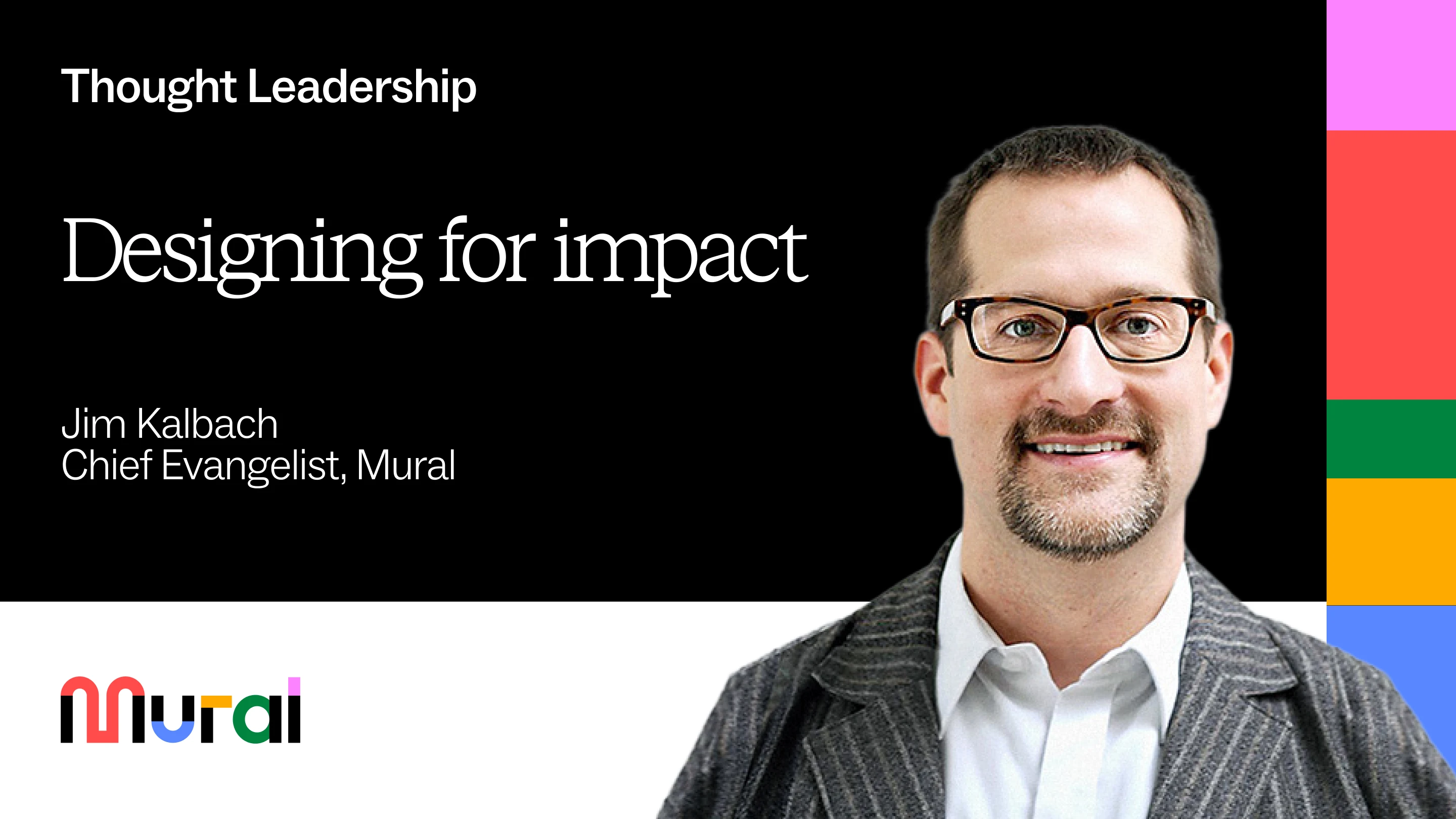Our brains are hardwired to process visual information differently than text or speech. Visualizations help us offload some of our working memory - they are efficient. But visual displays also allow us find new patterns faster.
For instance, Albert Einstein and other great scientists used blackboards to solve their toughest problems. They frequently commented on the importance of being able to take a step back and see the big picture.

This is the power of visual thinking: the ability to draw relationships where they previously didn’t exist. In this sense, MURAL seeks to let your team design better together and feel smarter as a group.
Best practices
MURAL is not like other documents. It’s a large, virtual wall you can solve problems on visually. You can interact with your content in new ways in MURAL. It's a unique experience.
Leveraging visual thinking to your advantage requires a different approach to creative problem solving. To help you get the most out of MURAL, here are five best practices to follow:
- Know your scale. MURAL is spatial. Know the scale you are working at. Keep the default sticky note, and work to that size.
- Keep it together. MURAL is big. You can map out all kinds of content and complete multiple steps of an activity in one place.
- Work visually. MURAL is visual. Work visually to help you find new patterns and solve problems better. Add color, images, links, arrows, lines, and icons to enhance the content.
- Maintain momentum. MURAL is collaborative. Invite your team to collaborate in real time or independently.
- Go digital first. MURAL is digital. Get content online fast to save time, effort and money. Rethink your process for digital. Capture offline work in MURAL.
Best practices with MURAL
Core use cases with MURAL
MURAL is flexible. You have a lot of control. Use it for anything you might use a whiteboard or flip chart for.
But blank whiteboards can be intimidating - where do you begin?
Below are some of the key uses cases we’ve found teams around world are using MURAL for.
- Design thinking & innovation. Teams use MURAL to solve problems creatively, with divergent and convergent techniques. This includes brainstorming and other creative exercises for innovation.
- Planning & management. Plan the plan in MURAL. Get all of the details of your effort in a visual format for everyone to see.
- Product & service design. Map out your product or service in MURAL. Zoom out for the big picture, zoom in to see the detail.
- Marketing & branding. Visualize an entire campaign. See trends at a glance, and design creative solutions quicker.
- Business & strategy. These day, business requires creativity. Visualize your problems to innovate your strategy at its core.
But uses go beyond these core types.
We see customers using MURAL for education, for instance - it's a perfect platform for interactive remote collaboration.
MURAL is also good for personal brainstorming, creating org charts, planning events, and much more. Hopefully you are inspired to use MURAL in new, creative ways!
Use cases with MURAL
Resources
For more information, see some of the follow resources used in this webinar:
- “Creating Team Activity Templates in MURAL,” webinar by Jim Kalbach (MURAL)
- “Designing At Scale,” webinar with Doug Powell (IBM)
- “Lean UX Around The World,” event with Jeff Gothelf
- “Jumpstart Team Creativity with Remote Design Sprints,” webinar with Laila von Alvensleben (Hanno)
- “Working Visually at McBeard,” Interview with Kailey Howell (McBeard)
- “Express your Product Vision with the Idea Stack,” webinar with Josh Wexler (Occom)
- "Do You Suffer From Workshop Amnesia?" blog post by Jim Kalbach










